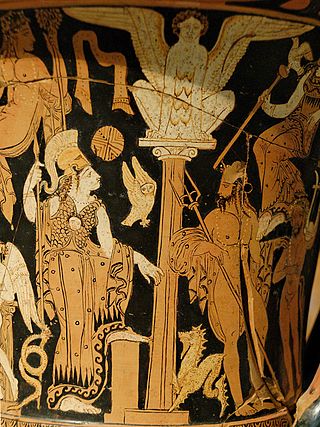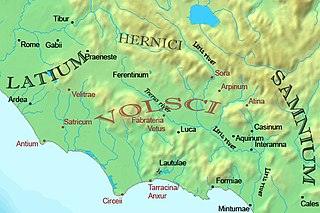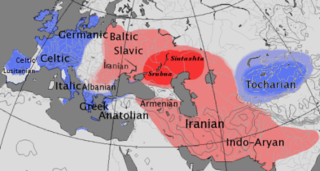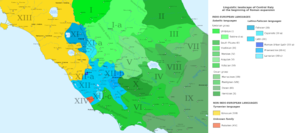
The Italic languages form a branch of the Indo-European language family, whose earliest known members were spoken on the Italian Peninsula in the first millennium BC. The most important of the ancient languages was Latin, the official language of ancient Rome, which conquered the other Italic peoples before the common era. The other Italic languages became extinct in the first centuries AD as their speakers were assimilated into the Roman Empire and shifted to some form of Latin. Between the third and eighth centuries AD, Vulgar Latin diversified into the Romance languages, which are the only Italic languages natively spoken today, while Literary Latin also survived.

The Indo-European languages are a language family native to the overwhelming majority of Europe, the Iranian plateau, and the northern Indian subcontinent. Some European languages of this family—English, French, Portuguese, Russian, Dutch, and Spanish—have expanded through colonialism in the modern period and are now spoken across several continents. The Indo-European family is divided into several branches or sub-families, of which there are eight groups with languages still alive today: Albanian, Armenian, Balto-Slavic, Celtic, Germanic, Hellenic, Indo-Iranian, and Italic; another nine subdivisions are now extinct.
The Old Italic scripts are a family of ancient writing systems used on the Italian Peninsula between about 700 and 100 BC, for various languages spoken in that time and place. The most notable member is the Etruscan alphabet, which was the immediate ancestor of the Latin alphabet used by more than 100 languages today, including English. The runic alphabets used in Northern Europe are believed to have been separately derived from one of these alphabets by the 2nd century AD.

Umbrian is an extinct Italic language formerly spoken by the Umbri in the ancient Italian region of Umbria. Within the Italic languages it is closely related to the Oscan group and is therefore associated with it in the group of Osco-Umbrian languages, a term generally replaced by Sabellic in modern scholarship. Since that classification was first formulated, a number of other languages in ancient Italy were discovered to be more closely related to Umbrian. Therefore, a group, the Umbrian languages, was devised to contain them.

The Falisci were an Italic tribe who lived in what is now northern Lazio, on the Etruscan side of the Tiber River. They spoke an Italic language, Faliscan, closely related to Latin. Originally a sovereign state, politically and socially they supported the Etruscans, joining the Etruscan League. This conviction and affiliation led to their ultimate near destruction and total subjugation by Rome.

Samnium is a Latin exonym for a region of Southern Italy anciently inhabited by the Samnites. Their own endonyms were Safinim for the country and Safineis for the people. The language of these endonyms and of the population was the Oscan language. However, not all the Samnites spoke Oscan, and not all the Oscan-speakers lived in Samnium.

Old Latin, also known as Early Latin or Archaic Latin, was the Latin language in the period roughly before 75 BC, i.e. before the age of Classical Latin. It descends from a common Proto-Italic language; Latino-Faliscan is likely a separate branch from Osco-Umbrian with possible further relation to other Italic languages and to Celtic; e.g. the Italo-Celtic hypothesis.

Venetic is an extinct Indo-European language, usually classified into the Italic subgroup, that was spoken by the Veneti people in ancient times in northeast Italy and part of modern Slovenia, between the Po Delta and the southern fringe of the Alps, associated with the Este culture.

The Faliscan language is the extinct Italic language of the ancient Falisci, who lived in Southern Etruria. Together with Latin, it formed the Latino-Faliscan languages group of the Italic languages. It seems probable that the language persisted, being gradually permeated with Latin, until at least 150 BC.

The Proto-Greek language is the Indo-European language which was the last common ancestor of all varieties of Greek, including Mycenaean Greek, the subsequent ancient Greek dialects and, ultimately, Koine, Byzantine and Modern Greek. Proto-Greek speakers entered Greece sometime between 2200 and 1900 BC, with the diversification into a southern and a northern group beginning by approximately 1700 BC.

Proto-Celtic, or Common Celtic, is the hypothetical ancestral proto-language of all known Celtic languages, and a descendant of Proto-Indo-European. It is not attested in writing but has been partly reconstructed through the comparative method. Proto-Celtic is generally thought to have been spoken between 1300 and 800 BC, after which it began to split into different languages. Proto-Celtic is often associated with the Urnfield culture and particularly with the Hallstatt culture. Celtic languages share common features with Italic languages that are not found in other branches of Indo-European, suggesting the possibility of an earlier Italo-Celtic linguistic unity.

The Osco-Umbrian, Sabellic or Sabellian languages are an extinct group of Italic languages, the Indo-European languages that were spoken in Central and Southern Italy by the Osco-Umbrians before being replaced by Latin, as the power of Ancient Rome expanded. Their written attestations developed from the middle of the 1st millennium BC to the early centuries of the 1st millennium AD. The languages are known almost exclusively from inscriptions, principally of Oscan and Umbrian, but there are also some Osco-Umbrian loanwords in Latin. Besides the two major branches of Oscan and Umbrian, South Picene may represent a third branch of Sabellic. The whole linguistic Sabellic area, however, might be considered a dialect continuum. Paucity of evidence from most of the "minor dialects" contributes to the difficulty of making these determinations.

The Italic peoples were an ethnolinguistic group identified by their use of Italic languages, a branch of the Indo-European language family.
As the Proto-Indo-European language (PIE) broke up, its sound system diverged as well, as evidenced in various sound laws associated with the daughter Indo-European languages.

Latin is a member of the broad family of Italic languages. Its alphabet, the Latin alphabet, emerged from the Old Italic alphabets, which in turn were derived from the Etruscan, Greek and Phoenician scripts. Historical Latin came from the prehistoric language of the Latium region, specifically around the River Tiber, where Roman civilization first developed. How and when Latin came to be spoken has long been debated.
The phonology of the Proto-Indo-European language (PIE) has been reconstructed by linguists, based on the similarities and differences among current and extinct Indo-European languages. Because PIE was not written, linguists must rely on the evidence of its earliest attested descendants, such as Hittite, Sanskrit, Ancient Greek, and Latin, to reconstruct its phonology.

The Latins, sometimes known as the Latials or Latians, were an Italic tribe which included the early inhabitants of the city of Rome. From about 1000 BC, the Latins inhabited the small region known to the Romans as Old Latium, that is, the area between the river Tiber and the promontory of Mount Circeo 100 km (62 mi) southeast of Rome. Following the Roman expansion, the Latins spread into the Latium adiectum, inhabited by Osco-Umbrian peoples.

Languages of the Indo-European family are classified as either centum languages or satem languages according to how the dorsal consonants of the reconstructed Proto-Indo-European language (PIE) developed. An example of the different developments is provided by the words for "hundred" found in the early attested Indo-European languages. In centum languages, they typically began with a sound, but in satem languages, they often began with.
The boukólos rule is a phonological rule of the Proto-Indo-European language (PIE). It states that a labiovelar stop dissimilates to an ordinary velar stop next to the vowel *u or its corresponding glide *w.

The Proto-Italic language is the ancestor of the Italic languages, most notably Latin and its descendants, the Romance languages. It is not directly attested in writing, but has been reconstructed to some degree through the comparative method. Proto-Italic descended from the earlier Proto-Indo-European language.











